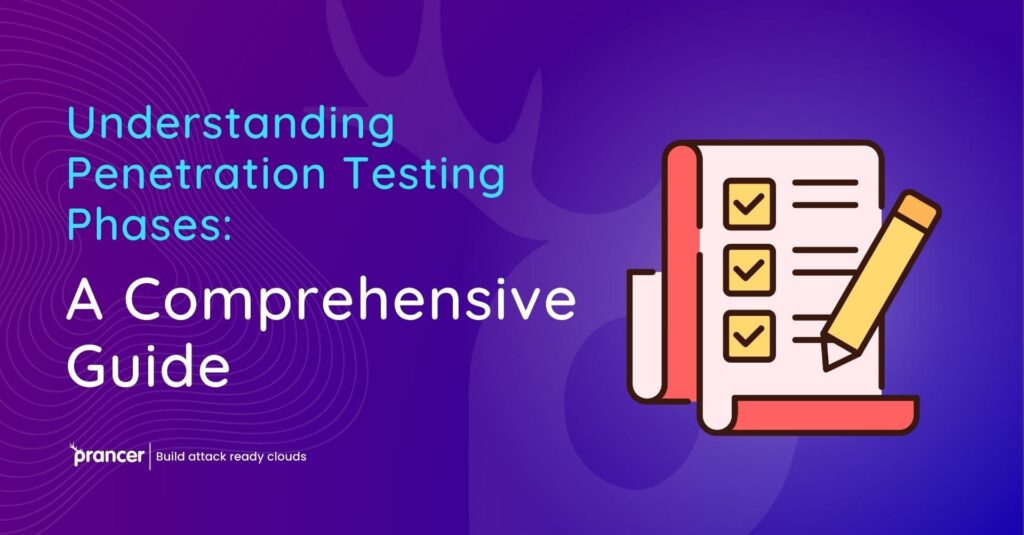

In the contemporary context, where businesses rely on IT systems, it is crucial to make them as secure as possible. One of the key components in achieving this security is known as penetration testing, or pen testing for short. This article goes more in-depth about the pen testing lifecycle, the goal of explaining every stage, and how Prancer is integral to it. We shall also briefly discuss the advantages that come with automated pen testing and how it improves the pen testing life cycle.
Protecting your organization’s information security is like fortifying a castle; one must check the defenses and strengthen the critical structures. Penetration testing involves a series of steps, which are aimed at defining opportunities to infiltrate an organization’s IT environment and thereby establish protection against threats. That is why it is time to explore the lifecycle in question and demonstrate how Prancer contributes to each of the stages.
Pen testing, better known as penetration testing, is a form of authorized emulation of cyber-attack to assess and identify potential weak areas in a computer system. It divides into various stages, called the pen testing lifecycle. It is helpful in a systematic analysis of the system to define measures to counter possible security threats.
Pen testing therefore bears such importance since it assists in establishing the strengths and weaknesses of a companies’ security systems.
Pen testing is crucial for the following reasons: Picture yourself installing a home security system with sophisticated alarms and devices, yet the security system has never been activated. Pen testing serves a critical purpose of proving that security measures put in place are effective and if they have any flaws, it is determined and rectified by the pen testers not real hackers. It is important for organizations to be proactive in the protection of information and this is the reason why it is important to address risks before they occur.
The first phase of pen testing lifecycle focuses on the definition of the scope of the pen testing, goals and guidelines. It works like how some games are played – you must know what you are seeking and within what parameters you will be seeking it. This stage involves the creation of the test plan and the agreement on the details of the test to avoid ambiguity.
In this phase, the tester tries to gather all the information about the target system as is possible. This can be likened to a scenario in a heist movie where someone goes round to survey a particular area before the actual robbery takes place. The more information that is gathered the better the testers will be in finding errors and bugs that need to be addressed. Some of the tactics include DNS analysis, network probing, and psychological manipulation.
After information is collected, the next process is to look for the weaknesses or the points where the attack may occur. You can imagine this is something akin to seeking gaps in the fortress. Vulnerabilities are sought to be identified and targeted which may consist of inadequate systems or software, faulty settings, or poor passwords.
This phase is, in fact, the actual ‘attack’, which is generally the fastest and most aggressive phase. Having experimented on the discovered vulnerabilities, testers seek to infiltrate the system without authorization. It is as if a knight is trying the doors of a castle to establish how powerful the lock is. The goal here is successful exploitation, but don’t confuse it with the actual compromise of the system; that’s why it is done in a controlled manner to know how far an attack can g
Following the successful attainment of an access point, the goal is then to establish the possibility of an exploit. What can the specific actor do with this access? Could they steal data, deny access to applications and services or make other forms of mischief? This phase is aimed at evaluating the likelihood of experiencing adverse impacts out of the vulnerabilities identified above.
The last step is to prepare an elaborate documentation of results obtained from the study. This report should be a kind of guideline that helps to strengthen your protection. It has identified vulnerabilities, the ways they were leveraged, and suggestions for addressing them. These are the details that are important in reinforcing the problems and enhancing your security solutions.
Overall, integrating the automated penetration testing into the pen testing life cycle has many benefits. Automation increases the pace of testing; it means that more often and scrupulously the tests can be made. Consequently, there are always new threats to discover, and Prancer’s automated solutions are excellent for that, which means that the security position is strong. Automated penetration testing is quite similar to having a dog that is permanently on guard, which can sense danger even in the dark.
It should be noted that Prancer is not a one-stop-solution for the pen testing lifecycle but plays a role in a relatively small part of this cycle.
Prancer on its part provides a critical boost to pen testing lifecycle. Through the advanced automated penetration testing services that it provides, Prancer allows for swift and efficient detection of vulnerabilities. Part of the lifecycle, Prancer’s platform has an unobtrusive yet always-on method for performing security assessments and offering actionable advice. It makes organizations to be alert and have strong security measures in place by preventing threats that may occur in the future.
While pen testing is an essential part of an organization’s security model, the pen testing lifecycle model should not be overlooked. The importance of each phase is evident, and by mastering and applying each of them, one can greatly improve their security position. The solutions provided by Prancer in this regard further augment this process by making sure that your security measures do not fall behind. Just as a word of caution, in the dynamic environment where cyber threats are emerging more and more frequently, the only effective strategy is the preemptive one.